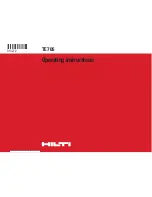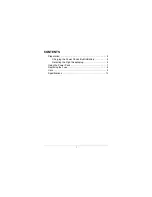
SERVICE TROUBLESHOOTING
4-10
Manual 0-2869
4.09 Main Arc Problems
Locate your symptom below:
A. Main cutting arc will not initiate
1. Work cable not connected.
a. Connect work cable.
2. Holding too high of a standoff.
a. Refer to Torch Instruction Manual for recom-
mended standoff heights.
3. Workpiece is painted or rusty.
a. Clean workpiece.
4. Faulty Main PC Board or Logic Board.
a. Measure for ±0 vdc at TP2 to TP1 on the Logic
Board when attempting to transfer. Refer to
Appendix 3.
• If TP2 goes to 0 vdc replace Logic Board.
• If not, replace Main PC Board.
5. Faulty Main Input Contactor.
a. Check per Subsection 4.10-D.
B. When operating the amperage drops off after the
main cutting arc initiates.
1. Torch tip contacts work.
Lift the torch tip off the work. At output set-
tings over 40 amps, circuitry in the power sup-
ply automatically reduces output current to 40
amps if the torch tip contacts the workpiece.
2. Faulty Pilot (PCR) Relay
a. With power off, measure for continuity between
wires #58 and #62. Refer to the appropriate
System Schematic in the Appendix. If continu-
ity is found, replace PCR.
4.10 Test Procedures
The test procedures in this subsection are referenced in
the troubleshooting section.
A. Safety Precautions
1. Significant DC Voltage exists after removal of input
power. Allow two minutes for discharge time. Volt-
age measured on input capacitors must be zero be-
fore performing service on the power supply.
2. Do Not touch electrical components with any part of
the human body when power is applied.
3. Keep away from any moving parts.
4. Hot surfaces can cause severe burns. Allow equip-
ment to cool before servicing.
5. Electrostatic discharge can damage printed circuit
board assemblies. Transport printed circuit boards in
proper antistatic shielded packages. Use proper
grounding techniques with wrist strap before handling
printed circuit boards.
6. Misaligned plugs can cause printed circuit board dam-
age. Be sure plugs are properly aligned and com-
pletely seated.
7. Excessive pressure can damage printed circuit boards.
Use only minimal pressure and gentle movement
when disconnecting or connecting printed circuit
board plugs.
B. Diode Testing Basics
WARNING
Disconnect primary power at the source before dis-
assembling the power supply, torch, or torch leads.
Testing of diode modules requires a digital volt/ohm-
meter that has a diode test scale. Remember that even
if the diode module checks good, it may still be bad.
If in doubt, replace the diode module.
1. Locate the diode module to be tested.
2. Remove cables from mounting studs on diodes to iso-
late the module.
3. Set digital volt/ohmmeter to diode test scale.
4. Using the Figures for each test, check each diode in the
module. Each diode must be checked in forward bias
(plus to negative) and reverse bias (negative to plus)
direction.
5. Connect the volt/ohmmeter positive lead to the anode
(+) of the diode and the negative lead to the cathode (-
) of the diode for forward bias testing (refer to follow-
ing figure). A properly functioning diode will conduct
in the forward bias direction and indicate between 0.3
to 0.9 volts.
Summary of Contents for CE CutMaster 75
Page 2: ......
Page 6: ......
Page 16: ...INTRODUCTION 2 2 Manual 0 2869...
Page 48: ...SERVICE 5 16 Manual 0 2869...
Page 55: ...Manual 0 2869 6 7 PARTS LISTS...
Page 80: ......
















































